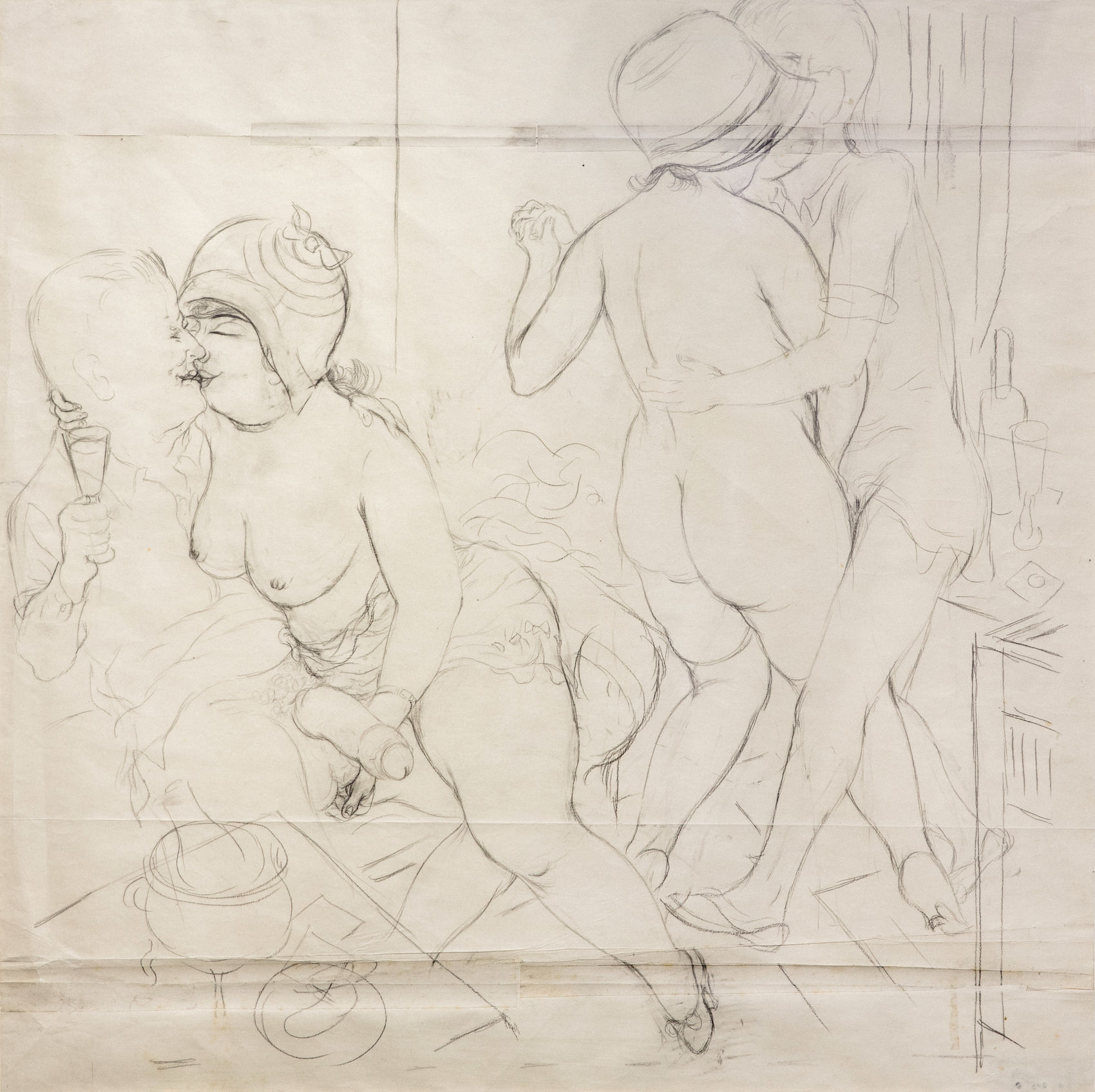Biography
George Grosz was a German-American painter, graphic artist, caricaturist and vehement opponent of war.
He is associated above all with the socially and socially critical paintings and drawings that are ascribed to the New Objectivity movement, which were mainly created in the 1920s and are characterized by sometimes extremely drastic and provocative depictions and often by political statements. However, his work also bears expressionist, dadaist and futurist traits. Typical subjects are the big city, its remoteness (murder, perversion, violence) as well as the class antagonisms that can be seen in it. In his works, often caricatures, he mocks the ruling circles of the Weimar Republic, takes up social opposites and criticizes especially economy, politics, military and clergy.
From June to October 1932, Grosz received a teaching assignment for the New York Art Students League. He accepted it, partly because of his deteriorating financial situation, and taught a nude class. He decided to leave Germany for good and emigrated to the USA on January 12, 1933; his children followed in October.
Immediately after the seizure of power at the end of January, his studio was stormed, possibly to be tracked down in his apartment. As early as 8 March 1933, nine days after the Reichstag fire, George Grosz was expatriated, the first and initially the only one of 553 public figures to be recorded immediately. His works that remained in Germany fell into the hands of the National Socialists, who confiscated them as degenerate art, sold them abroad at a low price or destroyed them. Of 170 works from the Berlin period, about 70 have disappeared, over 50 of which he had sent to his gallery owner Alfred Flechtheim, who himself had to flee at the end of May 1933 and liquidate his gallery.
In June 1938 Grosz became an American citizen. In 1946 his autobiography A little yes, and a big no was published, which was not published in German until 1955 with the title Ein kleines Ja und ein großes Nein. He suffered from depression and was increasingly inclined towards alcoholism. After Grosz had been appointed a member of the West Berlin Academy of Arts in post-war Germany, he returned to Germany in 1959 at the urging of his wife Eva from the USA.
Only a few weeks later he died on 6 July in his native Berlin after falling down the stairs due to drunkenness.
